DEI excavations in the upper garden of the Dormitio Abbey in the area of the Hagia Zion
Thanks to our proven cooperation with the Israel Antiquities Authority (IAA), namely Dr. Amit Reem, we continued in 2022, with the active support of Michael Dschernin (IAA), to pursue the pending questions on Medieval and Byzantine Jerusalem and its prior settlements.

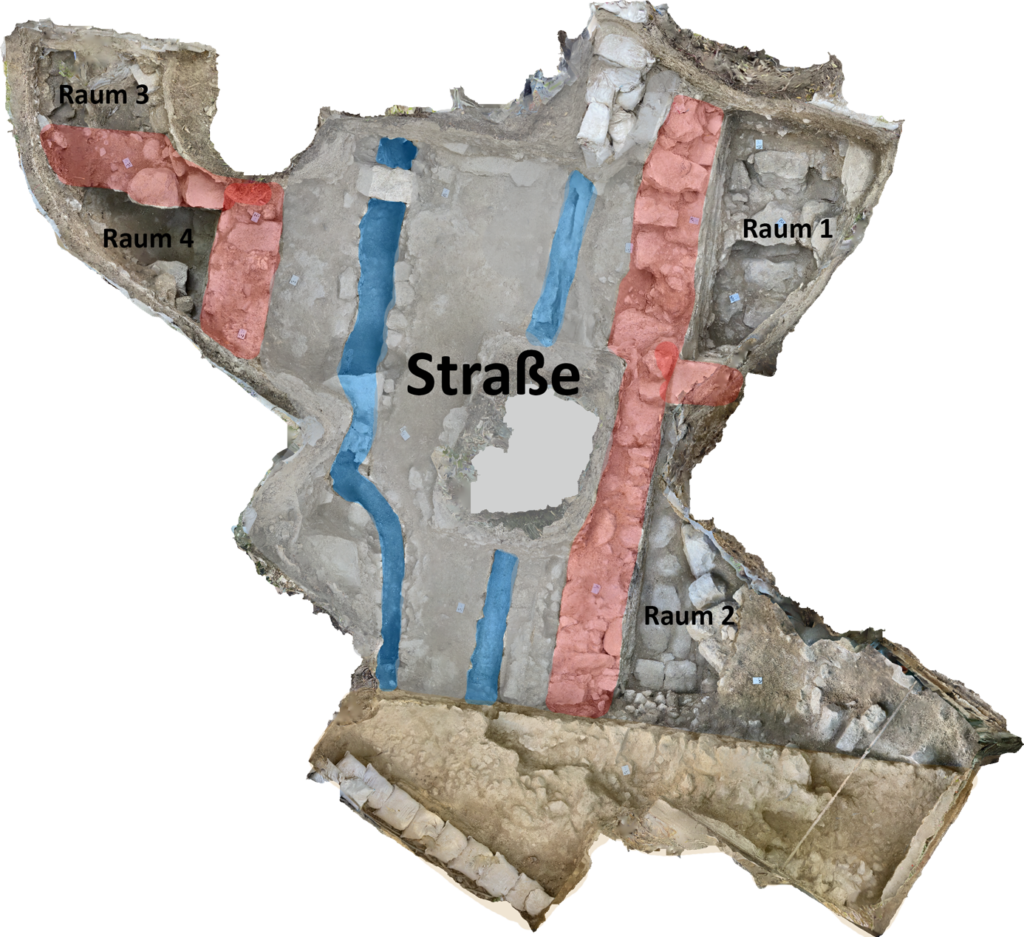
In the upper garden we again came across the enclosing wall of Hagia Sion from the time of the Crusaders (detailed report in: Jerusalem. Gemeindebrief ¬- Stiftungsjournal. 3/2021). This year we excavated its inner side, which was characterized by a well-developed courtyard area. There, the earlier construction phases of the Byzantine living area, laid out in the 6th century AD, had been levelled in order to create a wide walking area.
Under this medieval phase we found the Byzantine Cardo (main north-south road), which led from the south directly to the highest point of Mount Zion. In its layout there were two water channels (dirty water and drinking water).
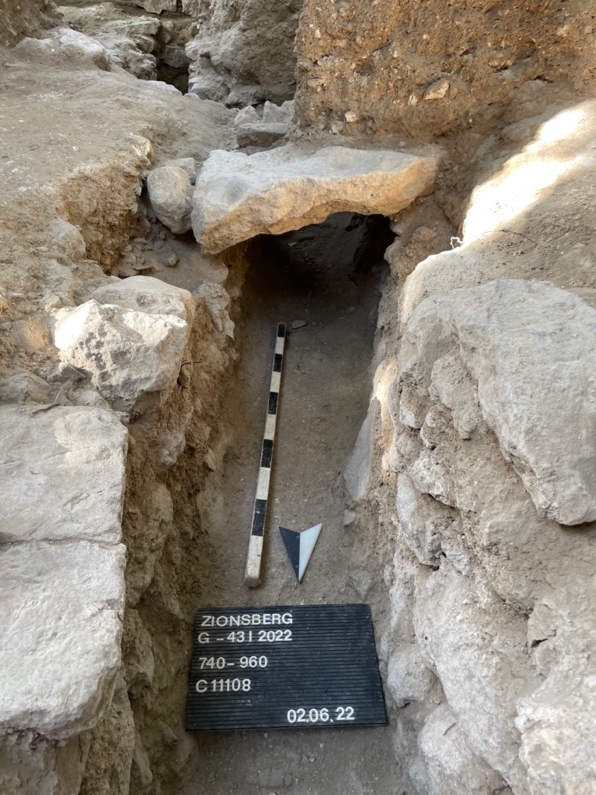
To the right and left of the street we uncovered several rooms of residential houses, which we partly undermined in order to study the even earlier construction of this area as well. On the walls there were even remains of plaster. Among the special finds were mosaic stones covered with gold and a fragment of a roof tile with the stamp of the X. Legion Fretensis which was stationed in Jerusalem in roman times. At the lowest point of our excavation we came across quarry remains that probably date to the time of Herod the Great.
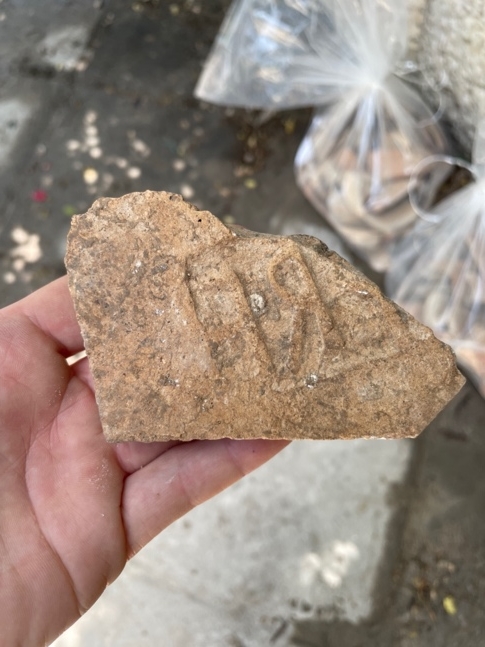
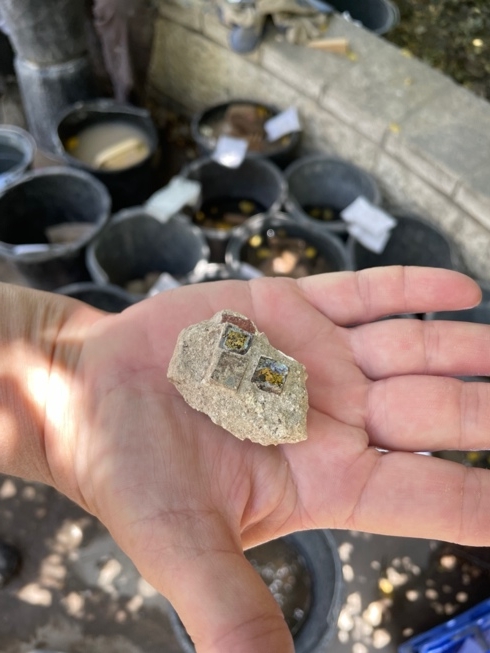

We would like to thank the monks of Dormitio Abbey very much for their hospitality, but especially our volunteers and staff. Thank you, great class, and off to the Greek area – where new exciting discoveries await us from 2023!
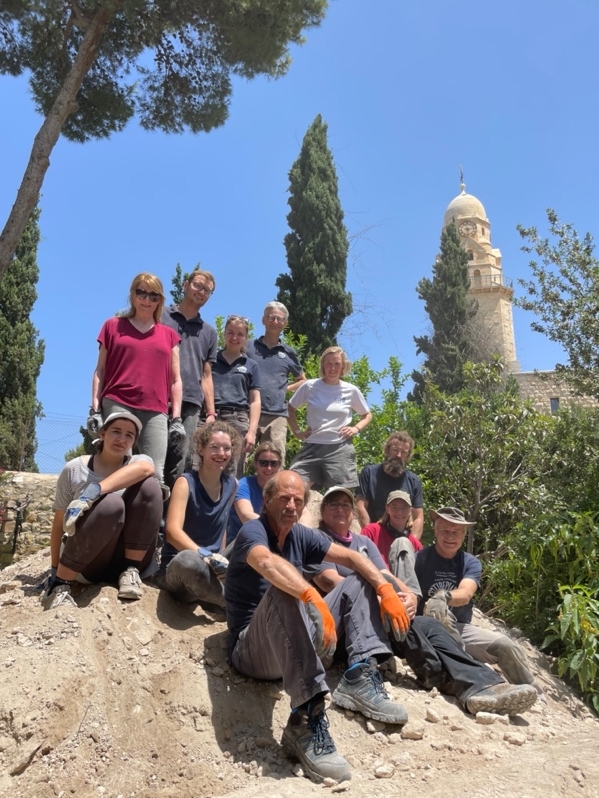
In order to be able to continue excavating successfully in the large areas of the Greek Orthodox Patriarch we invited five German geophysicists to prospect the newly targeted areas. Thes surveyed the so-called “Greek Garden” in the area of the Greek Orthodox Cemetery (Areas 6 and 7) with geomagnetics, geoelectrics, georadar and soil surveys. Their evaluation will take a few more weeks, but will hopefully give us hints to promising excavation sites for the coming years.
